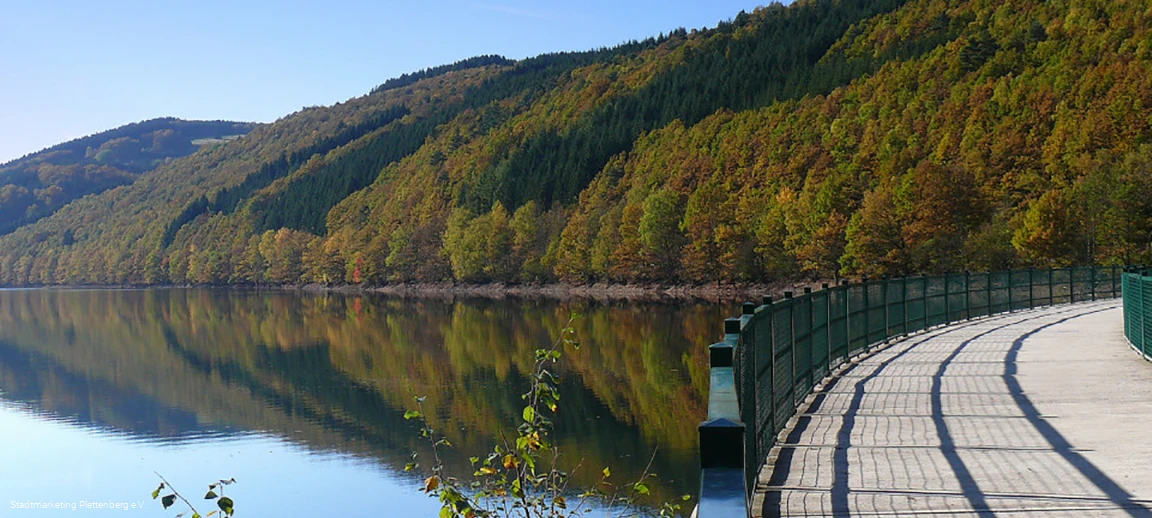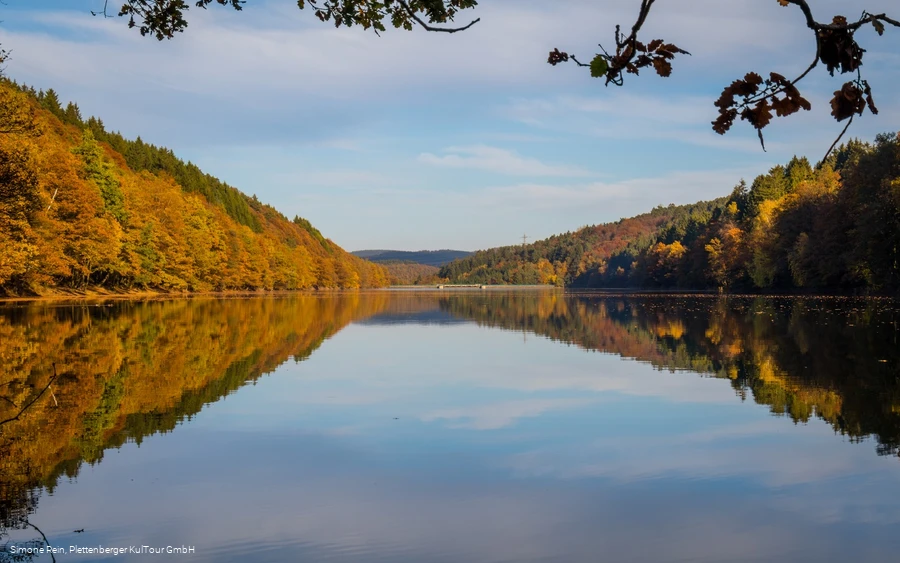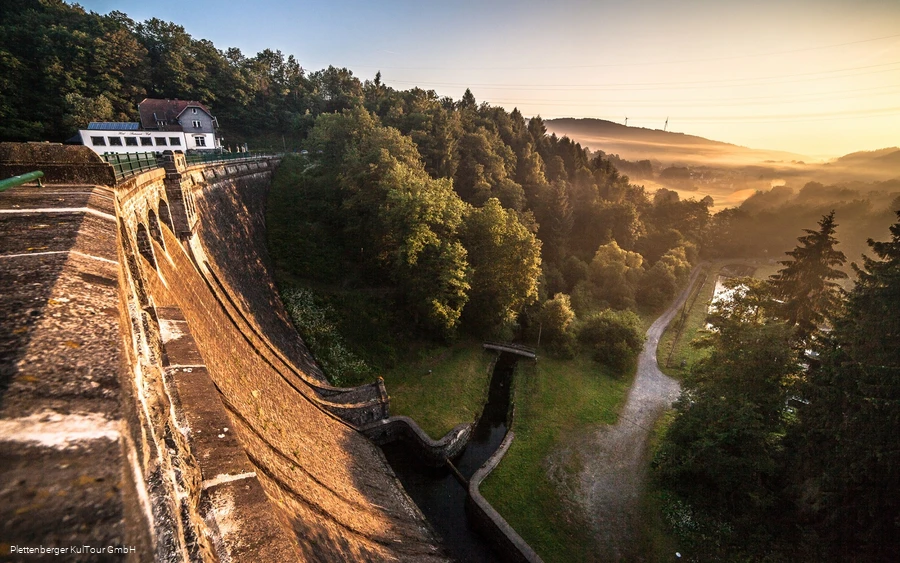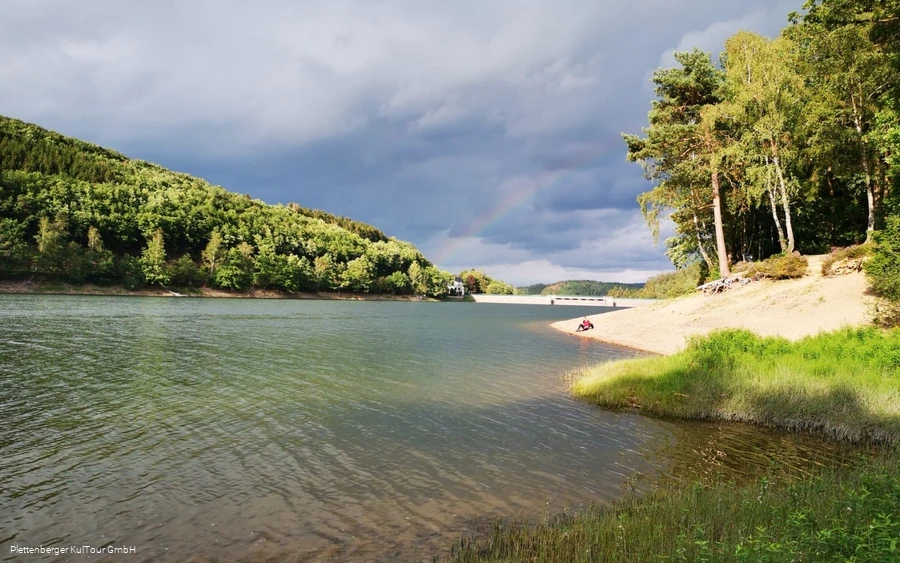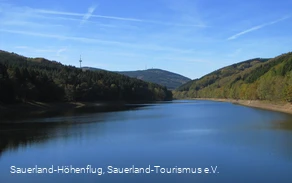- free of charge / accessible at any time
Oestertalsperre
Building / Modern architecture
Address
Oestertalsperre
An der Oestertalsperre
58840 Plettenberg
Telephone: 02391-605420
Properties:
Stand up paddling rental in the summer months
Hike along the Oestertalsperre dam with great views of the water (7.2 km)
Walking trail around the Oestertalsperre dam (4.2 km)
"Hoher Stein" natural monument - remnants from the region's volcanic past
Benches to rest on
Fishing at the Oestertalsperre dam (day permits required)
Gastronomy at or around the dam:
Restaurant "Zur Oestertalsperre" (distance approx. 50 m)
Haus Wiesenthal (distance approx. 2 km)
Restaurant Akademie (distance approx. 4 km)
Parking facilities:
Free parking directly at the dam wall
Travel by public transport:
MVG bus route 73 in the direction of Himmelmert/Oestertalsperre, bus stop: Oestertalsperre Wendetelle
Further information:
The Oestertalsperre is a service water dam. It was built between 1904 and 1906 according to plans by the renowned professor Otto Intze. The gravity dam is made of quarry stone and has a height of 36 meters with a crown width of 4.5 meters and a crown length of 231 meters. The dam has a capacity of 3.1 million m³and a surface area of 24.5 hectares.
About the facility
The reason for building the dam was to regulate the Oesterbach, as it played an important role in the economic development of the region. When it was very dry, the factories located on the Oesterbach and operated by water power were often in dire straits; when large volumes of water rushed down the valley in the fall or spring, the factory owners feared for their plants.
